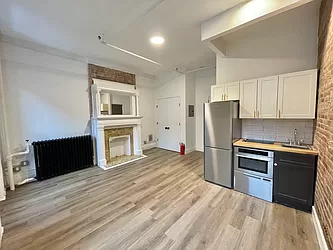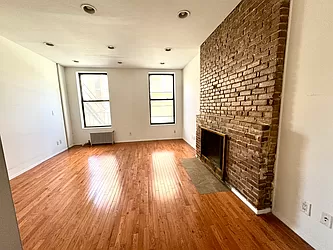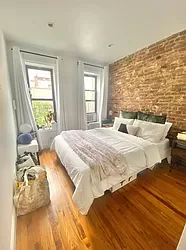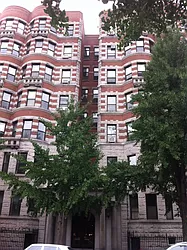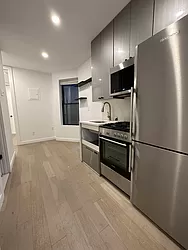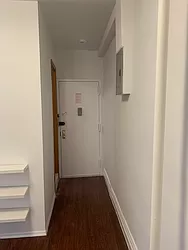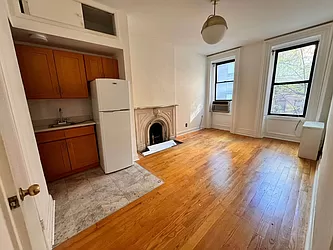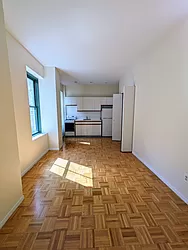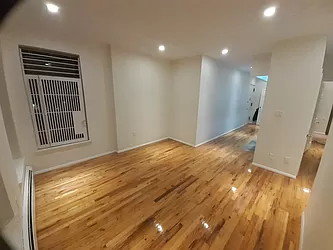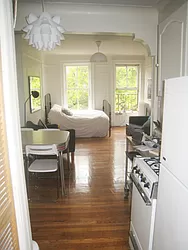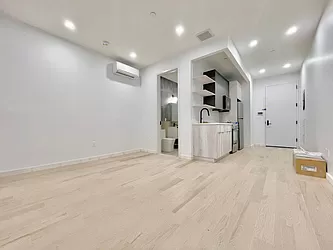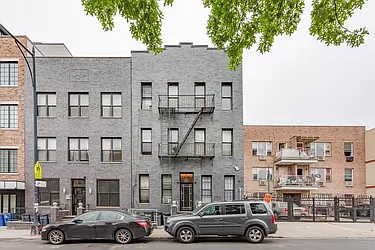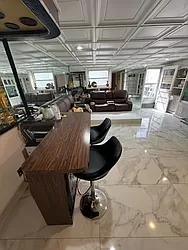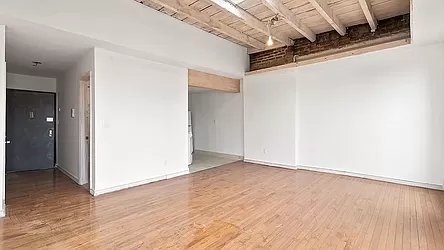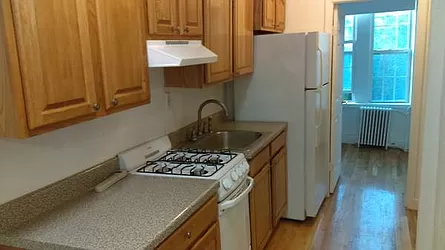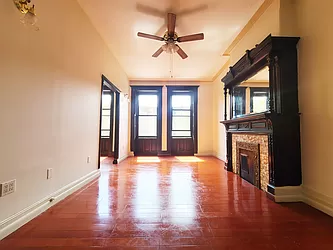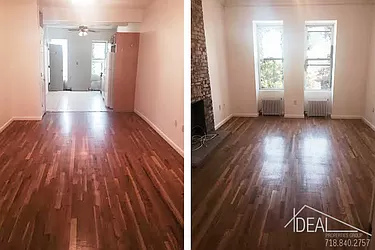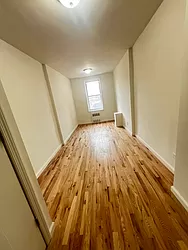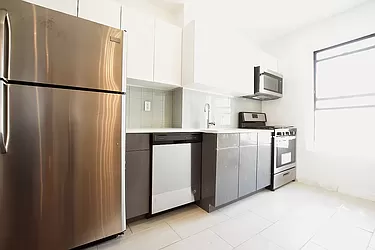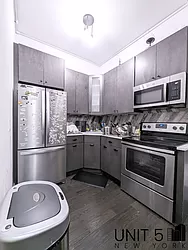
Is a noisy radiator turning your dream apartment into a nightmare? Read on! (Getty Images)
New York City has a unique soundscape: the honking of auto congestion; the subways clacking along the tracks, rumbling the tchotchkes on your window sill; the drunken arguments and bottle shatters in the dead of night. Perhaps no sound, though, is more New York than the hissing and clanging and banging of your apartment’s radiator. Yes, that hulking, oxidizing steam-heat contraption taking up valuable floor space in your bedroom is a longtime NYC mainstay. It can be your best friend — and your worst nightmare. Here’s everything you need to know about steam heat in New York City.
What Is Steam Heat? How Does It Work?
It begins in your building’s basement with the boiler. The boiler heats water, turning it to steam, which then rises through the pipes in your building and into your radiator. Once inside, the steam begins to push the trapped air out through the air valve. Once enough air has been replaced by hot steam, and the heat of the radiator reaches a set temperature, the valve closes, letting the radiator emit heat. Once the steam has cooled and the radiator is no longer heating your room, the process begins again: The cooled steam condenses back into liquid form — aka, water — and these water droplets then return to the basement via gravity, dripping back down the pipes, becoming one with the boiler once again. It’s the circle of life.
Manhattan Rentals Under $3,500 on StreetEasy Article continues below
Why Is My Radiator So Noisy?
Well, each type of sound means something different. Let’s start with hissing: If you’re hearing a tea-kettle-type whistling coming from your cast-iron radiator, chances are you’re dealing with limescale. Limescale, or hard-water scale deposit, is a mineral residue caused by water trapped in your radiator’s vent. This is a pretty simple problem to deal with — often, a paperclip can get the job done. You can also try removing the vent and boil it in white vinegar. If these don’t work, a replacement may be necessary.
What about hammering, banging, clanging, clanking, or ratting? Take a deep breath — you’re encountering the water hammer. A water hammer, or steam hammer, is a plumbing sound phenomenon that can occur due to a few different radiator issues. As we discussed above, after steam has heated your radiator and condensed back into water, it should drip back down into the boiler to restart the process. However, if the angle of the pipes (known as the “pitch”) is askew, or if your floor is warped, or if the radiator isn’t angled correctly, then the condensed water can get stuck in the piping, where it’ll sit and get cold. When passing steam meets the stagnant cold water, it launches the water droplets against the pipes, making awful banging sounds that make your radiator sound like it has an obnoxious personality.
Radiators aren’t supposed to make these noises. Surprisingly, especially if you’ve been frustrated by the steam heat in your New York City apartment, they aren’t supposed to make any noise at all.
How to Silence Your Noisy Heater
Some of the noises you’re hearing might be — no offense — your fault. Did you by any chance mess with the circular valve on the side of your radiator, thinking it was a thermostat? Guess what: It’s not.
A radiator’s air valve is an on/off dial. It should either be all the way closed, letting no heat out, or all the way open, letting heat out. Leaving it somewhere in the middle can cause a leak. Leaks can make noise (and can also soak your floor with water).
What to do? Ask your super to help you address some of the banging sounds — it may be necessary to prop up one side of your radiator to encourage gravity to pull water back to the basement. If the heat in your building is on but your radiator is cold, air may be trapped inside. Ask your super to “bleed” the radiator. But please don’t do it yourself: This is a complicated procedure that typically requires a professional’s skill set.
Brooklyn Rentals Under $3,000 on StreetEasy Article continues below
What If I Have a Pipe Running Through My Apartment but no Radiator?
There might not be much hope in this situation, unfortunately: If you don’t have access to the culprit radiator, there isn’t much you can do to address the noise yourself. Your best bet is to pray for your super’s assistance.
What If My Apartment Has Baseboard Heating?
Baseboard heating, also known as forced hydronic boiling, works in roughly the same manner as a standing radiator. They’re both systems of conveyance for hot water, and they’re both susceptible to the same issues. Most of the solutions listed in this article can be used for a baseboard system. Similarly, you should ask your super if you’re experiencing problems.
Why Is Steam Heat Ubiquitous in New York?
Well, it’s actually pretty great! There are many benefits to steam heating your apartment. For one, steam heat systems use only a few parts, which are reliable and durable if properly maintained. In addition, heat from steam is clean and dust-free — substantially better than central heating, which can stir up dust and other allergens.
New York’s first steam system was installed in 1881 in response to a need for an underground system immune to the elements. Now, New York has over 105 miles of steam piping serving nearly 2,000 buildings — it’s the largest steam system in the world, by a massive margin. But the thing is, steam heating wasn’t designed with modern apartments in mind. The reason your radiator can sometimes overheat your apartment, making you feel like you live in a sauna, is because it’s actually designed to do so. Older buildings in NYC weren’t built to be airtight. In fact, they were built to let in as much airflow as possible, to promote health — especially important in the overcrowded tenements of yore, where diseases like the Spanish Flu spread quickly and easily. Apartments are airtight now, but the radiators are the same. Replacing steam heat systems with central heat is both costly and impractical. However, some upgrades can increase the efficiency of the system — some are even required by the city.
In any case, steam heat is New York. The clanging is annoying, but it is also gorgeous, orchestral — it is your prewar apartment’s “Rhapsody in Blue.” It is an effortless thing to feel forgotten in the city, to be anonymous in the crowd, to return to your fifth-floor walkup closet over a mile from the nearest train, to be alone with your Chinese takeout, basking in the buzzing neon ad outside your window. But you will always be kept company, given comfort, held through the night by your dear friend, the clanking radiator.
More “NYC Explained” on One Block Over
—
Inspired to find your next place in New York? Whether you’re looking to rent or to buy, search NYC apartments on StreetEasy.


